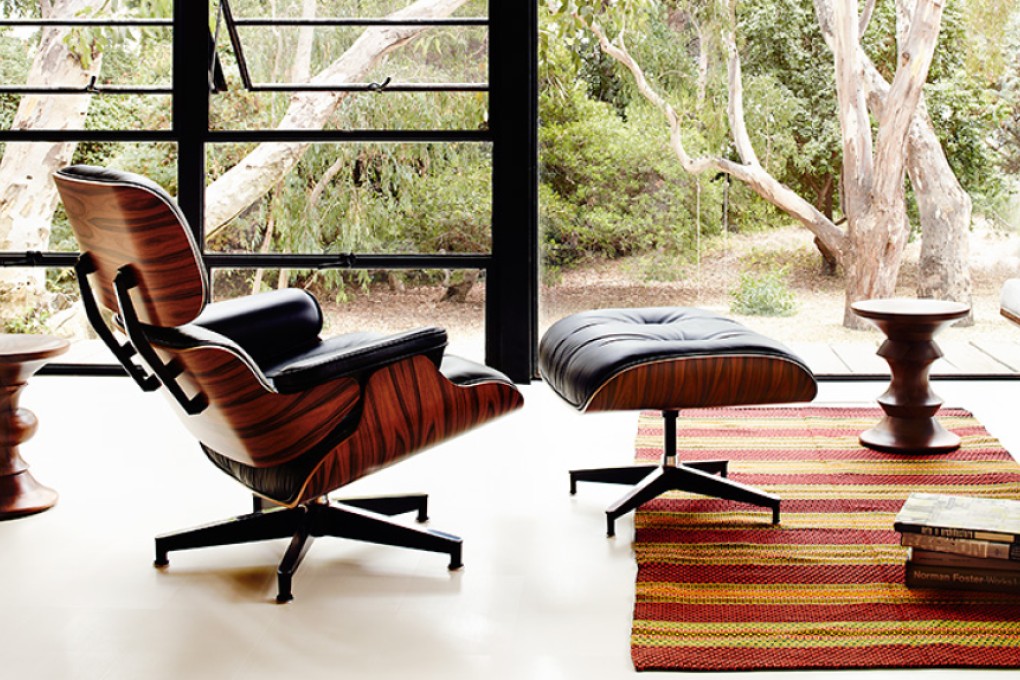Emotional attachment: Design icons attain special place in our hearts by fulfilling key role in the home
Homeowners and interior designers have a special liking for magnificent pieces that have a unique place in history

Fashion may come and go, but when it comes to dressing our homes certain looks are here to stay. The past century has seen everything from coffee tables and office chairs to table lamps and coat racks reach icon status and become designated as works of art. That’s not to say good design can only be found in museums - some of the best-known pieces remain hot sellers today and sought after by homeowners and interior decorators alike.
The Eames Lounge Chair and Ottoman - designed by Charles and Ray Eames for Herman Miller to resemble “a well-used first baseman’s mitt” - has been in continuous production since its arrival in 1956. The American husband-and-wife duo set out to create furniture that was simple, sophisticated and functional. Key to their approach was signature moulded plywood technology, which gives the Lounge Chair its sleek shape.

Sleek lines - plus an appearance in Diamonds Are Forever - are also the hallmark of Achille and Pier Giacomo Castiglioni’s Arco Floor Lamp. The dramatic design was inspired by a streetlight and features a marble base, fitted with a hole to allow it be transported with a broom handle. The Arco has inspired many imitations, but the original remains a bestseller as a statement piece for living and dining areas.

Another icon of Italian lighting design, Giorgio Armani’s Logo Lamp was designed and produced in 1982 for the fashion legend’s Milan offices. Eighteen years later, the elegantly minimalist table lamp launched Armani/Casa and became the symbol of the lifestyle brand and interior design studio. It recently starred in a series of photo essays by Beppe Brancato, in the homes and offices of global influencers Nick Vinson, David Collins, John Pawson and Vincenzo De Cotiis.

When it comes to tables, few are as recognisable as the Noguchi Coffee Table, with its free-form glass top sitting on interlocking curved wooden legs. The table was designed for the president of New York’s Museum of Modern Art, where it is part of the permanent collection, and has been in continuous production since 1948. “Everything is sculpture,” the celebrated artist and collaborator said.

The Mid-Century Design movement that produced the Noguchi table and Eames chair also resulted in the gracefully formed Butterfly Stool. Japanese industrial designer Sori Yanagi designed the moulded plywood and steel seat by combining Eastern aesthetics with Western materials. Still a bestseller, it is also featured in the furniture collection at the Metropolitan Museum of Art.

Continuing the trend, in 1958, Danish architect and designer Arne Jacobsen debuted the now iconic Egg chair. The upholstered piece - which can swivel towards or away from conversations - was created for the lobby of the SAS Royal Hotel in Copenhagen with sculptured curves to contrast with the building’s bold geometric lines. It was soon embraced by decorators worldwide, being used on countless sets for TV shows, at San Francisco International Airport and in a McDonald’s in London.

More recently, designers such as Marc Newson and Philippe Starck have been pushing the boundaries of design to create iconic items for a new generation. Starck made polycarbonate chic with his baroque-inspired Louis Ghost chair in 2002, more than 1.5 million pieces of which sold within 10 years and which has inspired several offshoots. Australian designer Newson’s aluminium and fibreglass chaise, Lockheed Lounge, became the world’s most expensive design object after selling at auction for more than £2 million (HK$18.86 million) in 2015.

While most would consider these items as icons of design, their enduring popularity speaks to their function as a place to sit, a light to read by or a display for coffee-table books. As Charles Eames once said: “The real questions are: Does it solve a problem? Is it serviceable? How is it going to look in 10 years?”